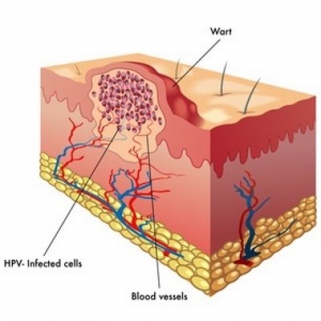Types of Warts Explained
Warts on the skin can be irritating, embarrassing and annoying. Doctors classify warts in 5 different types:
- Common warts –
- Dome-shaped bump
- Grey or brown colour
- Often found on the fingers and hands (can also appear or spread elsewhere)
- Plantar warts –
- Appear on the soles or balls of the feet
- Hard and/or thick skin
- Tend to cause pain when walking or standing
- Flat warts –
- A flat top rather than a dome shape
- Colour tends to be pink, brown or yellow
- Appear on the arms, legs and sometimes the face
- Periungual warts –
- Tend to appear around fingernails and toenails
- Rough bumps with jagged border
- Filiform warts –
- Facial areas – nose and mouth
- Flesh-colored
- Unusual texture with bits sticking out
Warts are not generally considered to be a medical concern as they should eventually go away of their own accord. However, this is not necessarily a quick process. Estimates suggest that 30% might clear up in 10 weeks. That leaves 70% taking over 10 weeks, most of which will take a year or two to clear up.
Older people tend to find they last even longer becoming bigger and more resistant to treatment. The longer a wart remains, the more likely it is to spread so that warts pop up nearby or on other areas of the body.
That’s why many people try to get rid of their warts rather than waiting and hoping for the best.
DIY Wart Removal Options
Over the Counter Preparations
If the treatment is started early enough, over the counter preparations (usually containing salicylic acid) might be effective in getting rid of the warty growth by destroying the virus and allowing fresh skin to grow.
This isn’t a quick fix and involves applying a solution daily for several months, filing down the skin regularly to get rid of the dead cells.
Acid treatment has to be done carefully as the acid will burn the surrounding healthy skin if it makes contact.
This treatment is not advisable for facial warts, due to the delicate skin.
Freezing/Cryotherapy
As an alternative to the wart removal solutions, DIY wart freezing kits are now available in the chemists.
These may be slightly more effective than the acid solution and require fewer treatments. However, they are certainly not effective on 100% of warts
Professional Wart Treatments
When DIY treatments have been ineffective and people are keen to get rid of their warts once and for all, doctor-led treatments offer more aggressive and effective options.
Freezing/Cryotherapy
Doctors and skin clinics are able to offer a more aggressive freezing treatment than those available in the chemist. This will penetrate the skin more deeply, getting to the root of the problem.
It may take more than one treatment to resolve, but is usually effective within 2-3 sessions at most.
Laser/Surgery
For very resistant warts or verrucas, doctors can user laser or even localised wart removal surgery to remove the area affected by the wart virus, allowing new skin to grow.
Wart Removal London & Bristol
Treatment using freezing, laser or surgical techniques is available at Skin Surgery Laser Clinic who have a selection of locations conveniently based in London and Bristol.
All procedures are carried out by highly trained and experienced doctors and surgeons.
Many patients now choose private treatment for warts, as provision on the NHS is very limited – even where a service is available, there can be lengthy waiting times.
For more information or to book a consultation, please complete the form on this web page or call 020 7386 0464.



